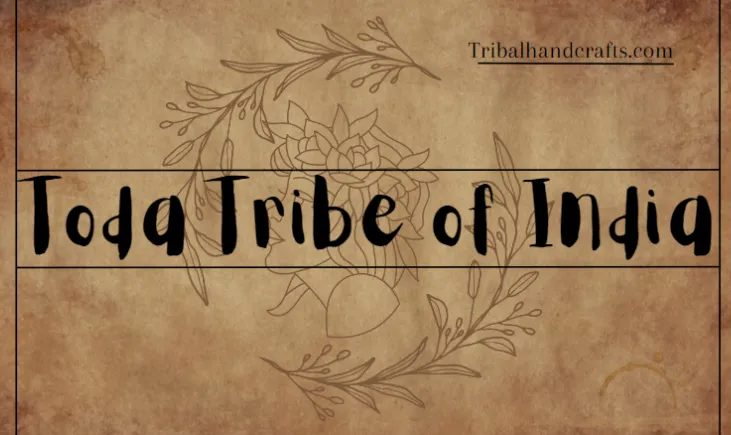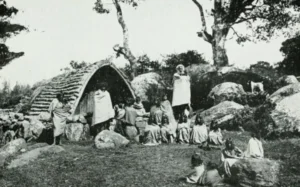
The Toda Tribe of India
The Nilgiri Hills, a mesmerizing mountain range cradled in the southern reaches of India, harbor a vibrant tapestry of indigenous communities. Among them, the Toda tribe stands out for its unique cultural heritage and enduring traditions. Believed to be of Dravidian origin, their language, customs, and way of life paint a distinct picture within the region. This article delves into the fascinating world of the Toda tribe, exploring their traditional lifestyle, artistic expressions, and the challenges they face in safeguarding their cultural identity in the modern world.
1. Traditional Lifestyle and Customs: A Life Woven Around Buffaloes
The Todas are primarily a pastoral community, their lives intricately intertwined with their prized possession – the buffalo. Traditionally, they practiced a form of transhumance, migrating seasonally between settlements to find fresh grazing lands for their buffalo herds. This pastoral lifestyle fostered a strong community spirit, with well-defined roles and responsibilities for each member.
The sacred buffalo holds immense significance in Toda culture. Its motifs adorn their intricate Poothukuli embroidery, a craft traditionally practiced by Toda women. These embroideries, featuring geometric patterns and symbolic representations, adorn their clothing and serve as a testament to their artistic prowess. Funeral ceremonies showcase the deep reverence the Todas hold for their deceased. Elaborate rituals are performed, reflecting their spiritual beliefs and connection with the afterlife. However, modern influences like tourism and changing land use patterns have brought about subtle adaptations in their traditional way of life, necessitating a delicate balance between preserving their heritage and adapting to contemporary realities.
2. Architecture and Artistry: A Sustainable Symphony
The architectural style of Toda huts reflects not just their cultural identity but also their deep respect for the environment. Built with locally sourced materials like bamboo and wood, their huts are designed to be eco-friendly and blend seamlessly with the surrounding landscape. But the true custodians of Toda art are the women. Their mastery of the intricate Poothukuli embroidery, passed down through generations, continues to be a vital source of cultural expression. Their vibrant threads weave stories of their life, beliefs, and connection to nature. Beyond embroidery, Toda artistry extends to mural paintings adorning their huts and rhythmic music played on instruments like the ‘kurti’ (flute) and ‘odu’ (drum). These art forms showcase a rich repertoire of motifs and themes, intertwined with their daily lives and spiritual beliefs.
3. Language and Cultural Practices: A Fight for Survival
The Toda language, a unique branch of the Dravidian language family, faces the threat of extinction due to a declining number of speakers. However, community-led initiatives aimed at language revitalization offer a glimmer of hope. Craft weaving, besides being an art form, serves as a crucial source of income for the Toda community. The intricate patterns and motifs woven into their textiles not only embody their artistic heritage but also transmit traditional knowledge across generations.
Modernization presents a complex challenge. Balancing the need for development with the protection of their traditional way of life is crucial. Unique cultural practices like the ‘Manche’ festival, a celebration of the buffalo herds, are central to the Toda identity. However, safeguarding these practices requires a collaborative approach that considers the socio-economic needs of the community alongside their cultural aspirations.
Conservation Challenges and Sustainable Development: Balancing Needs
The preservation of the sacred buffalo population poses a significant environmental challenge. Maintaining healthy grazing lands amidst competing land use demands requires innovative solutions. Sustainable livelihood options that build upon their traditional expertise in animal husbandry and agriculture are essential. Collaborations between the Toda community and external organizations can lead to the implementation of effective conservation projects that strike a balance between environmental protection and the well-being of the tribe.
Promoting Cultural Tourism Responsibly: A Two-Way Street
Tourism, if managed responsibly, can be a double-edged sword. It can provide much-needed economic opportunities for the Toda community. Initiatives that empower Toda women by creating a sustainable market for their exquisite Poothukuli embroidery products are a step in the right direction. Tourists can experience authentic Toda traditions during popular festivals like the ‘Teer’- a vibrant harvest celebration. However, responsible tourism requires respect for the Toda way of life. Engaging with local communities in a sensitive and respectful manner is key to fostering understanding and building bridges.
Preserving Identity Through Education and Awareness: Empowering the Future
Integrating Toda history and culture into mainstream education curricula is crucial. This fosters pride among Toda youth and creates a more informed and understanding society. Individuals can contribute to preservation efforts by supporting indigenous-led initiatives or advocating for policies that recognize the unique role of the Toda tribe within the Indian cultural landscape. Digital media and storytelling platforms can play a vital role in raising awareness about the Toda tribe’s rich heritage and the challenges they face.
The Way Forward: A Legacy Worth Preserving

The Toda tribe stands as a testament to India’s rich tapestry of indigenous cultures. Their unique traditions, from their intricate embroidery to their reverence for nature, offer valuable insights into a way of life that has thrived for centuries in harmony with the environment. Preserving this heritage is not just about safeguarding the identity of the Toda people; it’s about protecting a vital thread in the vibrant cultural fabric of India.
Q1: Who are the Toda tribe?
The Toda tribe is an indigenous community residing in the Nilgiri region of India. They have a unique cultural heritage and are known for their distinct language, traditional practices, and pastoral lifestyle.
Q2: What is the significance of buffaloes in Toda culture?
Buffaloes hold a central role in Toda culture. They are considered sacred animals and are integral to various aspects of Toda life, including the Poothukuli craft, funeral rituals, and everyday livelihood.
Conclusion
The Toda tribe epitomizes the rich cultural diversity and enduring resilience of indigenous communities in India. Their traditional lifestyle, intricate artistry, and deep-rooted connection to the environment paint a vivid picture of a way of life that has thrived for centuries in harmony with nature. Despite facing modern challenges and the threat of cultural erosion, the Toda people remain steadfast in their efforts to preserve their heritage and pass it on to future generations. As we reflect on the unique legacy of the Toda tribe, it becomes clear that their story is not just about the past but also about the future. By recognizing, respecting, and supporting their cultural preservation efforts, we can ensure that the vibrant tapestry of India’s indigenous cultures continues to flourish for generations to come.
For more information please go to our website www.tribalhandcrafts.com




